Paul Hoover Interview
(1) Which development stages has your poetry gone through, and what are the main poetic philosophies or ideas driving each of these stages?
The first two poetry books I took from the shelves of the Chicago Public Library as a young man who had not yet been formally educated were those of Theodore Roethke and Thomas Kinsella. It was the Roethke that interested me because, being the son of a professional gardener in Michigan, his Midwest roots reminded me of my own as the son of a Protestant minister. My mother gardened. All summer, we ate the corn, lettuce, carrots, green beans, and tomatoes she had produced. We went to a restaurant only once a year, on Mother’s Day, to relieve her from the burden of having to cook.
My formal education began in earnest in the poetry workshops of Paul Carroll, the Chicago poet and editor of Big Table, who had created a sensation by publishing the Beat writers Ginsberg, Kerouac, and Burroughs, as a student editor of The Chicago Review. Considered profane, the issue was refused distribution by U.S. Postal authorities and made natural news. A subsequent trial was overseen by Judge Julius Hoffman, later of Chicago 7 fame, who judged the writing to be of moral value. Paul Carroll encouraged his students to take chances in their writing, to go beyond the accepted limits; in other words, to “make it new,” as Ezra Pound had written.
The next departure was discovering the Ron Padgett book, Great Balls of Fire, on a library table. A second-generation poet of the New York School, which included John Ashbery, Frank O’Hara, James Schuyler, Kenneth Koch, Barbara Guest, and Kenward Elmslie, Padgett’s poetry encouraged humor and formal chance-taking. I learned that the everyday had value in poetry. Poems needn’t be reverent and dignified all the time. They are as much of the real world as we are.
I discovered Surrealism and Dada, especially as it appears in Eastern Europe (Charles Simic and Vasko Popa), the Spanish language poets, Lorca, Neruda, and Vallejo, as well as the Portuguese of Carlos Drummond de Andrade. This influence came to the surface in Poems in Spanish, written in English as if in Spanish.
I recognize that a number of my poems are considered difficult. A poet friend in Chicago remarked that I was a “poet’s poet.” In other words, you have to be inside the same language game to understand my work. Poetry is indeed a form of gaming and chance-taking. You are casting meaning in lots, but the words find unity, no matter how distant, because the they are propelled by feeling, personal history, and instinct. Also, the subject could not be more serious: the world and all its c/harms. I am far from being a language poet, but I have written serial poems that stack lines like stones from disparate fields, and they find a momentary unity as they pass in parade. The books that are most serial are Edge and Fold (Apogee Press, 2006) and Desolation: Souvenir (Omnidawn, 2012). Jack Spicer described writing serial poems as entering a series of rooms along a hallway. You enter and turn on the light, then you turn it off and proceed to the next page and do the same thing. The language poets try to write only the middle of the Aristotelian model of beginning, middle, and end. The poem continues lifting off, and it can land anywhere in the process, because such poetics deplores crescendo. The serial poem was undoubtedly one of the stations on the way to language poetry. Having also been influenced by Objectivism, they also avoid the transcendental signifier. I don’t mind a rousing crescendo, and transcendence would be just fine with me.
I enjoy reading philosophy for the puzzlement of it, especially mystical philosophy. The poets I have translated include San Juan de la Cruz and Friedrich Hölderlin, both mystical through religion or madness. Mysticism finds the truths that can’t be seen, only guessed at. What if your only subject were emptiness? What stones would you throw in that well to show something is there?
(2) T.S. Eliot once said that complex experiences and society require complex poetry. How do you view this statement in the context of your work?
Society is indeed complex at the present time. We are faced with the possibility of a great disorder driven by climate change and a rising Christian fascist impulse in our country. Politically, I’m left of center, a well-meaning California liberal. Eliot was so conservative as to call himself a royalist. That’s because his family had wealth, based on a St. Louis brick factory, they wanted to conserve. But he was a great poet. I agree with Karl Marx that much of life, including literature, is touched by politics and social class position, but when a poem starts preaching at the expense of the poetic, it becomes suspect. The poetic involves uncertainty, mirror-play, and truths hinted at rather than flatly declared. Its strength is in weakness and happenstance. Here’s a page from Desolation: Souvenir (2012), one of fifty pages in this form. The title of the first poem appears as a line in the last poem and vice-versa all the way through, so that a Doppler Effect, or echo, appears at the center. The poem joined my developing proceduralism with serial poetry.
the count is down to none
no false alarms lately
time and space are calm
little by little
trouble becomes us
destination: mirror
desolation: souvenir
the tomb is prepared
for what lies in it
who made the world blink
for our friend’s pleasure
the closer we get to a statue
the more we’re made of plaster
some metaphysical pattern
is holding up our bones
death is a trick of nature
one size fits all being
moon, cover our craft
before we are only breath
I’m reminded that my friend, Joseph Lease, referred to my writing as “via negativa,” which in theology means the process of naming the unnamable (God) by what God is not. I seem naturally to aim toward empty space, impossibility, and nothingness, where the riches are. But I have also written perfectly grounded and sensible poems like “The Fish,” about a fishbowl by an open window, through which passes the sensual sound of Peggy Lee singing “Fever.” But the poem ends:
The world also goes in a circle,
tilting away from the sun.
It’s out there looking for something
but comes back every year
with little for the finding.
Time, too, goes in circles,
on watches only the old people wear,
the ones who think they’re short on time
and go to the bank for conversation.
(3) Within the landscape of contemporary American poetry, how do you perceive your own position?
I’m a belated New York School poet from Chicago, who is also influenced by language poetry, proceduralism (Oulipo), the Deep Image, serial poetry, and, most likely, the poets I’ve translated. The proceduralism emerged around 2008, when I set out to write Sonnet 56, 56 formal versions of Shakespeare’s Sonnet 56. It was published by Les Figues in 2010. The versions include Noun Plus Seven, Homosyntactic Translation, Haikuisation, Jingle, Villanelle, Imagist, Tang Dynasty, and so on. Noun Plus Seven is an invention of Oulipo in which every noun in an established work is replaced by the seventh noun to follow it in the dictionary. Homosyntactic Translation is the replacement of all major parts of speech—nouns, verbs, adjectives, and adverbs—by other words of the same kind. Haikuisation reduces the sonnet to haiku, and so on. I also have a second procedural manuscript, “The Windows,” that was published online. Most of those works are long poems. For instance, The Windows (A War in Tawara) is an abecedarian poem, A to Z, in which every line is a palindrome:
Add “A,”
A nut for a jar of tuna,
A Santa at NASA.
Borrow or rob,
Boston did not sob.
But sad Eva saved a stub.
Cigar? Toss it in a can. It is so tragic.
Sonnet 56 and The Windows are so different from my other poems that they present an identity crisis. The procedural and conceptual works have to be published by specialty presses closer to the art world than that of poetry. Les Figues is such a press.
(4) I have translated and published three anthologies of American postmodern poetry: "American Poetry Since 1940" edited by Mark Strand, "American Poetry Since 1950: Innovators and Outsiders" edited by Eliot Weinberger, and "American Poetry Since 1970: UP LATE" edited by Andrei Codrescu. Your Norton anthology of "Postmodern American Poetry" differs in some ways from these collections, including the new movements from the 21st century. Could you share your assessment of the historical significance of the other anthologies mentioned above?
The second edition of Postmodern American Poetry: A Norton Anthology, 2013, goes far beyond the other anthologies in representing cultural diversity, language poetry, conceptualism (Kenneth Goldsmith and Vanessa Place), Newlipo (Christian Bök and Harryette Mullen), and Flarf (K. Silem Mohammad, Drew Gardner, Craig Dworkin, Brian Kim Stefans, Sharon Mesmer, and Katie Degentesh). Flarf is the construction of poems by cybernetic means. For example, typing a search phrase into Google that gives you back thousands of results that you then “harvest“ and “sculpt” into poems. The direction and tone are your choice, but often the result is comedic and sardonic. Maxine Chernoff created the poem, “What It Contains,” using the search phrase, “the novel contains,” resulting in a melee of wildly divergent novels. That poem is included in the anthology I recently mailed to you.
It remains to be seen if the new poetics will survive cultural developments of the present time. In the late 90s, David Lehman published The Last Avant-Garde: The Making of the New York School of Poets. At that time, with great energy, the language poets were announcing themselves as the new vanguard, to be followed by other new developments, like Newlipo and performance poetry. The New York School, for all its merits, was not the last avant-garde. The anthology, American Hybrid, edited by Cole Swensen and David St. John, was created on the principle that a new hybrid literature was emerging through a gradual negotiation of vanguard practice by the mainstream. The term, “post-language lyric,” appeared in the literary press. But every generation makes an adjustment with new practices, because society itself is changing. The poetry of William Carlos Williams makes possible Frank O’Hara’s “I do this, I do that” everydayness in the next generation, also the lyric poetry of Denise Levertov. What was avant-garde in one generation becomes central in the next.
(5) Do you align yourself with any specific school or movement within American postmodern poetry? If not, have you created your own movement or poetic manifesto?
When we lived in Chicago in the 70s and 80s, we briefly considered, with Elaine Equi and Jerome Sala, announcing ourselves as The Chicago Imagists, based on the Harry Who and Chicago Imagist painters such as Roger Brown, Jim Nutt, Christine Romberg, and Ed Paschke. That would have been true for the four of us at the time, but we decided against stance-taking as ultimately limiting. As it happened, I selected an Ed Paschke painting of George Washington for the cover the 1994 edition. The same image appears, blown up, on the cover of the second edition, 2013.
(6) Your writing exhibits tendencies of deconstructive postmodernism, but we know that deconstruction has completed its task of subverting established culture, constructive postmodernism is a more suitable trend for addressing contemporary needs? Please share your thoughts on this matter.
This is a complicated issue. Personally, I feel we are still in a Postmodern period, and what is called the “Millennial” period is a passing nod at the calendar. I suspect that the pressing climate threat is going to undo many of our social and intellectual assumptions. I would vote for a constructive postmodernism, if it were running for office. Poetry’s practices come and go. Flarf, for instance, can be criticized as adolescent nonsense, but there are useful digital programs that can creatively reorganize a text. In writing roughly one-third of the poems in Viridian (1997), I used the computer software, Travesty, designed by Pound scholar, Hugh Kenner, and the poet, Charles O. Hartman. On the primitive black screen of the day, I entered sections of a movie script I’d written for Joseph Ramirez’s independent film, Viridian. Employing a randomization from 1 to 9 letters at a time, it scrambled the sentences, often to poetic effect when properly edited. The writing was more lyrical in tone than I’d ever produced. Here’s a sample from the poem, “Reason’s Eye”:
The surface of desire
changes like a river,
wind within a hill.
She breaks meaning’s
edge with a knife
of ice and reason.
Yet this can only
be spoken in a voice
of calming snow.
She lives in words
as shadow, in the eye
of a hawk over water,
opaque as memory’s
ice seen through
dust and space.
Meanwhile, I am waiting to see what this generation has to offer in terms of the New. The work of Terrance Hayes interests me, especially Sonnets for My Past and Future Assassin, Natalie Diaz’s Postcolonial Love Poem, and Whereas by Layli Long Soldier.
Have university creative writing programs so leveled the field that the concept of “the new” itself seems dated? No, they have not. But there is still such a thing as dull mainstream verse.
(7) The leaders of various first-generation postmodern movements like the New York School, Beat Generation, Confessional Poetry, and the Black Mountain School have mostly passed away. Now, we have movements like Neo-Beat, Language Poetry, Performance Poetry, Visual Poetry, and Cyber-Poetry gaining prominence. How do you evaluate the successes and failures of the American poetry scene in the past three decades, and what has been your personal role in it?
I see on the news that climate change and developments in Artificial Intelligence are creating the largest cultural and economic shift in a hundred years. We may be at the point where the author of a new Waste Land needs to step forward. The nearby city of Santa Rosa, California, lost 5,000 houses to fire in a single night. All I can say is that wonderful poetry is being written in our time, and some of them, like Zedan Xelef Almito, Evan Burkin, and Elodie Townsend, have been in our recent classes.
(8) Thirty years ago, when I translated your poetry, I was drawn to the satirical power in your work. After three decades of honing your craft, what progress have you made in terms of your own poetic concepts, style, and techniques?
I have always enjoyed irony and see its contradictions as a form of social truth. A major change in my writing was brought about by the death of my father, Robert Hoover, which led to producing the elegiac volume, Poems in Spanish (2006). Translating the great German poet, Friedrich Hölderlin, circa 2007, with Maxine Chernoff was also impactful, as was translating The Complete Poems of San Juan de la Cruz (2021) with Mexican poet, María Baranda. Both developments brought me closer to lyric, against which I had sometimes defended myself, ironically, with irony. Hölderlin teaches openness, innocence, and madness, for example, “It’s sweet to get lost / In the Holy Wilderness / And drink, o kind spirit, at the wolf teats / of the waters.” Influence may be felt in “Gravity’s Children,” a series of poems in O, and Green (2021) based on the Old Testament, specifically the books of the prophets, beginning with Isaiah.
(9) Which poets have influenced your writing, and who are your favorite American or foreign poets?
Emily Dickinson, William Carlos Williams, Wallace Stevens, Federico García Lorca, César Vallejo, Carlos Drummond de Andrade, Inger Christensen, and John Ashbery.
(10) Do you have any opinions on John Ashbery? I ask because I was the first to systematically translate and publish his poetry in Chinese. I'm curious to know his standing among contemporary American poets.
John Ashbery is one of my favorite poets. Since he won the Pulitzer Prize, National Book Award, and National Book Critics Award in the same year, he has been seen as our country’s major poet. That was over 30 years ago.
(11) In your Norton anthology, you included 26 poets from your generation, the American poets of the 1940s. However, you did not include your own work. In Chinese anthologies, if the editor is a poet too, they often include their own work. What is your perspective on this?
I published my own work in the first edition of the anthology in 1994. I decided to exclude my own work from the second edition, because I had to drop some friends, including David Lehman and August Kleinzahler. I’m sorry, in retrospect, that I excluded my own work.
(12) Outside of your Norton anthology, are there any other poets you would recommend to Chinese readers? I personally admire the poetry of Dave Smith and T.R. Hummer, who also hold high esteem in American poetry, your anthology did not include them. Is it because their work lacks postmodern characteristics or for other reasons?
I would recommend the work of Canadian poets, Sylvia Legris and Christian Bök, as well as the American poets, Maxine Chernoff, Elaine Equi, G.C. Waldrep, David Lehman, Cole Swensen, and Rae Armantrout. Rae won the Pulitzer Prize for poetry a few years ago.
I have nothing against the work of Dave Smith and T.R. Hummer and know them only by reputation. We travel in different circles, and they have been associated with a different poetics.





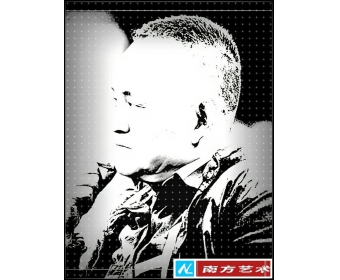
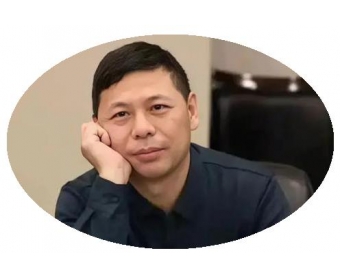
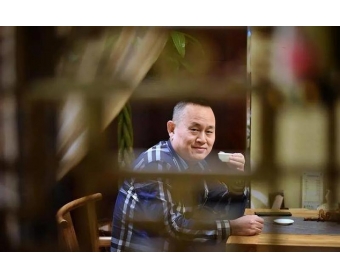
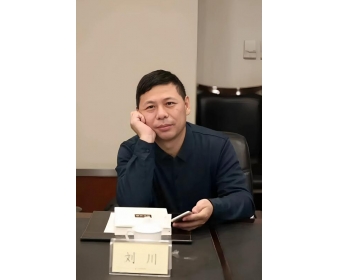
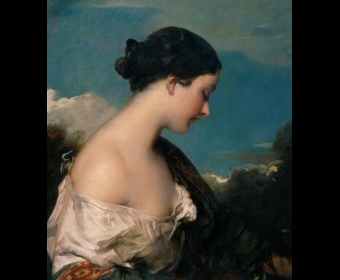

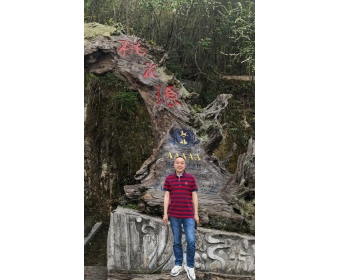


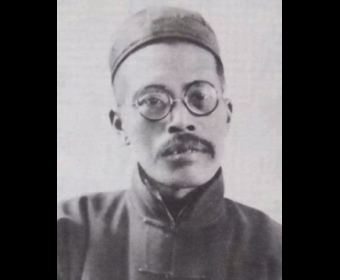
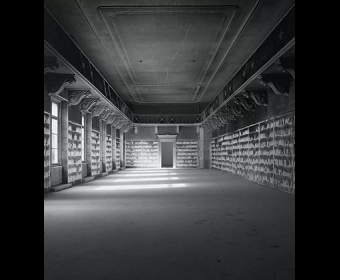
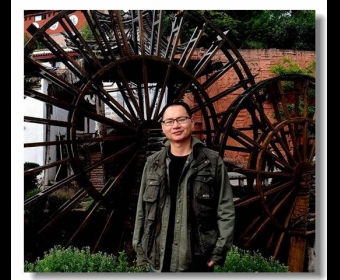



 川公网安备 51041102000034号
川公网安备 51041102000034号

